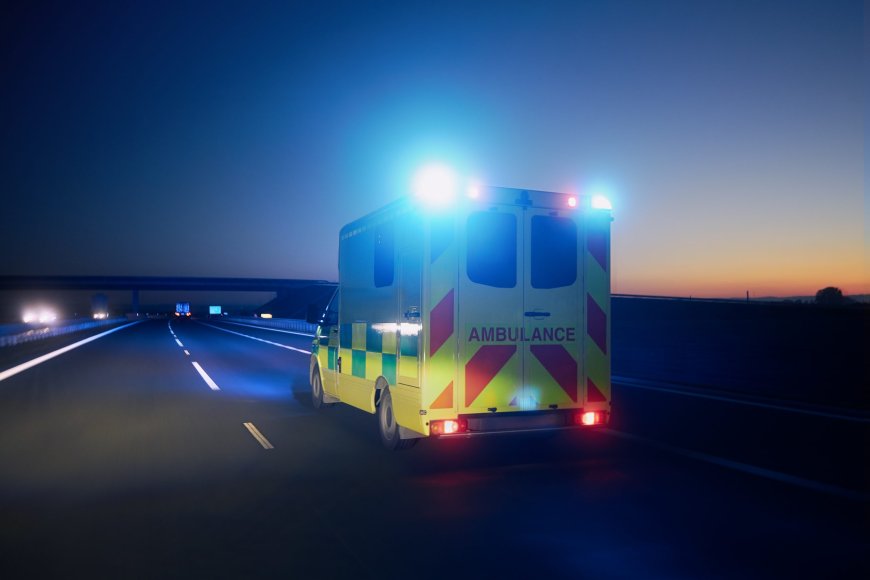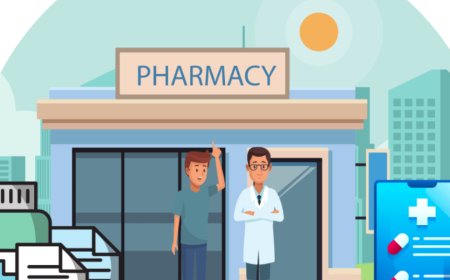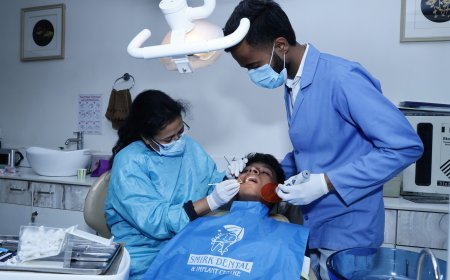Why Do Children Need Specialized Pediatric Ambulance Services?
Children require specialized pediatric ambulance services for age-appropriate care, equipment, and trained medical staff during transit.

When a child faces a medical emergency, every second counts, and every detail matters. Unlike adults, children require special medical attention, equipment, and handling, especially during transportation. This is where specialized pediatric ambulance services come in a vital component in safeguarding the health and lives of young patients during transit. Whether the transport is from one hospital to another, from home to a medical center, or involves an Airport Ambulance, pediatric services are designed to provide the safest and most effective care.
Lets explore why these services are not just important but essential in the broader scope of medical care for children.
Understanding Pediatric Ambulance Services
A pediatric ambulance is specifically designed to cater to infants, toddlers, children, and adolescents with medical needs. These ambulances are equipped with child-friendly medical devices, properly sized safety gear, and trained pediatric specialists. They ensure that children receive age-appropriate treatment and emotional care while being transported.
In most cases, these services fall under broader Ambulance Transfer Service offerings but are tailored for young patients. Unlike standard ambulances, pediatric ones are not just scaled-down versions of adult care vehicles they are fundamentally different in design, personnel training, and protocols.
The Differences Between Adult and Pediatric Patients
Understanding why children require specialized services begins with recognizing the fundamental physiological and psychological differences between children and adults.
1. Medical and Anatomical Differences
Children are not just small adults. They have unique medical profiles:
-
Smaller airways and faster breathing rates
-
Immature immune systems
-
Greater sensitivity to medications
These differences demand equipment that is sized and calibrated for pediatric use. The wrong equipment or dosage can lead to complications during transit.
2. Psychological and Emotional Needs
Children react differently to trauma and medical emergencies. A child in an ambulance may experience extreme fear, confusion, or distress. Specialized pediatric paramedics are trained to handle such emotions calmly and provide comfort, minimizing trauma.
Moreover, having child-friendly interiors, toys, or even playful designs within the ambulance can ease anxiety and contribute to better cooperation during treatment.
3. Family-Centric Approach
Pediatric ambulance services also factor in the emotional needs of parents and caregivers. These services often allow a parent to accompany the child, provide updates during transit, and include trained personnel who can offer reassurance.
Why General Ambulance Services Are Not Enough
While general ambulance services are competent in managing emergencies, they fall short when it comes to pediatric-specific cases. Heres why relying solely on standard services can be risky for children.
1. Equipment Compatibility Issues
Many adult ambulances do not carry equipment suitable for infants or toddlers. This includes:
-
Pediatric ventilators
-
Child-sized cervical collars and spine boards
-
Neonatal incubators
Without this equipment, effective treatment during transit becomes challenging, if not impossible.
2. Lack of Pediatric Expertise
General paramedics, while highly skilled, may not have sufficient training in pediatric emergencies. Pediatric emergencies often involve different symptoms, different treatment timelines, and different urgency levels. Having pediatric-trained professionals ensures accurate, timely decisions under pressure.
3. Safety and Comfort Concerns
Children require special handling to avoid injury during transportation. A sudden brake, rough terrain, or incorrect strapping can result in harm. Pediatric ambulances come with appropriately sized stretchers and harnesses to ensure maximum safety and comfort.
The Importance of Pediatric Ambulance Services in Critical Situations
There are many scenarios where specialized pediatric ambulances are not just helpful, but life-saving.
1. Neonatal Transfers
Newborns with birth complications often need immediate care from a higher-level neonatal intensive care unit (NICU). Pediatric ambulances are equipped with incubators, oxygen support, and neonatal specialists to ensure a stable and safe transfer.
2. Inter-Hospital Transfers
When a child requires advanced diagnostics, surgery, or specialty care not available at the initial hospital, timely inter-hospital transfers become crucial. Pediatric ambulance services ensure that no time is lost and no compromise is made in care during these transitions.
3. Airport or Long-Distance Transfers
Sometimes, a child may need to be transported internationally for advanced treatment. In these cases, a specialized Airport Ambulance with pediatric care can provide safe travel to and from the airport, ensuring continuity of care throughout the journey. These services also handle the logistics of air travel, like oxygen clearance and coordination with onboard medical staff.
The Role of Pediatric Ambulance Services in Chronic Illness Management
Children with long-term conditions such as cancer, congenital heart defects, or rare genetic disorders often need repeated hospital visits or transfers. Standard ambulance services may not be suitable for these ongoing needs.
1. Routine Transfers with Medical Supervision
For children undergoing chemotherapy, dialysis, or respiratory therapy, pediatric ambulances offer a controlled environment. These vehicles carry the necessary support systems and trained staff to manage side effects or sudden health fluctuations en route.
2. Emergency Response for Known Conditions
In children with epilepsy or severe asthma, emergencies can strike unexpectedly. Pediatric ambulance teams are prepared to handle such predictable yet high-risk scenarios with precise intervention protocols.
3. Home to Hospital Support
Many families care for medically fragile children at home. When complications arise, a pediatric ambulance is the safest way to transport the child without risking further deterioration.
Training and Personnel in Pediatric Ambulance Services
Its not just about having the right vehicle the human element is equally critical in pediatric ambulance services.
1. Pediatric Paramedics
These are professionals who receive extensive training in child development, pediatric emergency care, and family communication. Their expertise goes beyond clinical knowledge to include soft skills like empathy and de-escalation techniques.
2. Pediatric Nurses
Some pediatric ambulance units include registered pediatric nurses, particularly for high-risk transfers. They monitor vital signs, administer medications, and provide detailed handover reports to the receiving facility.
3. Coordinated Teamwork
A good pediatric ambulance crew operates with seamless coordination. From the driver to the medical staff, every member understands their role in ensuring a smooth and safe transfer.
Technology and Equipment in Pediatric Ambulances
Specialized pediatric ambulances are designed to be mobile ICUs (Intensive Care Units) tailored for children. Heres a look at the critical technology and tools on board.
1. Child-Sized Ventilators and Monitors
Respiratory support machines in pediatric ambulances are calibrated for different pediatric age groups from neonates to adolescents. These ventilators adjust tidal volume, oxygen flow, and pressure settings based on the childs size and condition.
2. Medication Dosing Systems
Pediatric care requires exact dosages based on body weight and age. Ambulances carry precision-based drug delivery systems and digital calculation tools to avoid human error.
3. Telemedicine and Real-Time Communication
Modern ambulances are equipped with telemedicine capabilities, allowing paramedics to consult with specialists during transit. This is especially useful in rare conditions or complex emergencies.
Pediatric Ambulance Services and Parental Peace of Mind
One often-overlooked aspect of pediatric ambulance services is the emotional assurance they provide to parents and caregivers.
1. Informed Involvement
Pediatric teams keep parents informed every step of the way, reducing uncertainty and fear. They explain medical interventions in layman's terms, helping families stay calm and cooperative.
2. Emotional Comfort
When allowed to accompany their child, parents feel reassured. Specialized teams are trained to manage parental anxiety without compromising patient care.
3. Continuity of Care
From the moment a call is made until the child is safely transferred, pediatric ambulance services maintain high continuity in medical documentation, vital sign tracking, and coordination with receiving hospitals something standard services may not fully provide.
When Should You Request a Pediatric Ambulance?
Not all medical situations require a pediatric ambulance, but certain cases do. Here are some indicators:
1. Age of the Patient
Infants and toddlers, due to their fragility, should always be transported via pediatric services.
2. Pre-Existing Conditions
Children with known medical histories, such as heart conditions, severe allergies, or seizure disorders, require specialized monitoring during transit.
3. Long Distances or Complex Transfers
If the transfer involves long distances, multiple stops, or air travel, a pediatric-focused Ambulance Transfer Service ensures that complications are minimized and care remains consistent.
Final Thoughts
Children are delicate, emotionally sensitive, and medically unique. Treating them in emergency situations demands more than general medical knowledge it requires a specialized, compassionate, and well-equipped system. Pediatric ambulance services offer just that: a tailored, safe, and responsive solution designed around the needs of young patients.
Whether its a hospital transfer, a home pickup, or an Airport Ambulance requirement, relying on pediatric ambulance services can make the difference between risk and reassurance, between uncertainty and expert care. In a world where every second and every breath matters, our youngest deserve nothing less than the best.
















![Top 9 Real Estate Mobile App Developers in Riyadh, Saudi Arabia [2025 Edition]](https://www.biphoo.uk/uploads/images/202507/image_430x256_6879d0d524335.jpg)






















